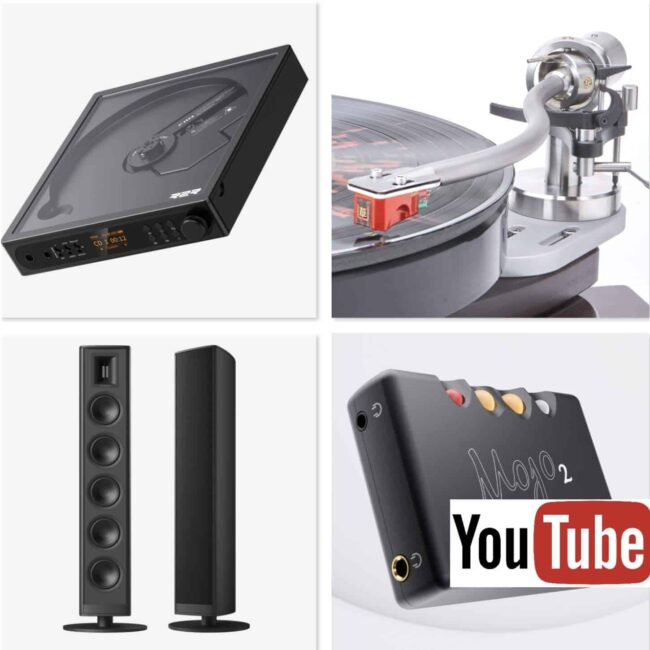The Article
NCF CLEAR LINE MAINS CONNECTOR FROM FURUTECH
29th February 2024
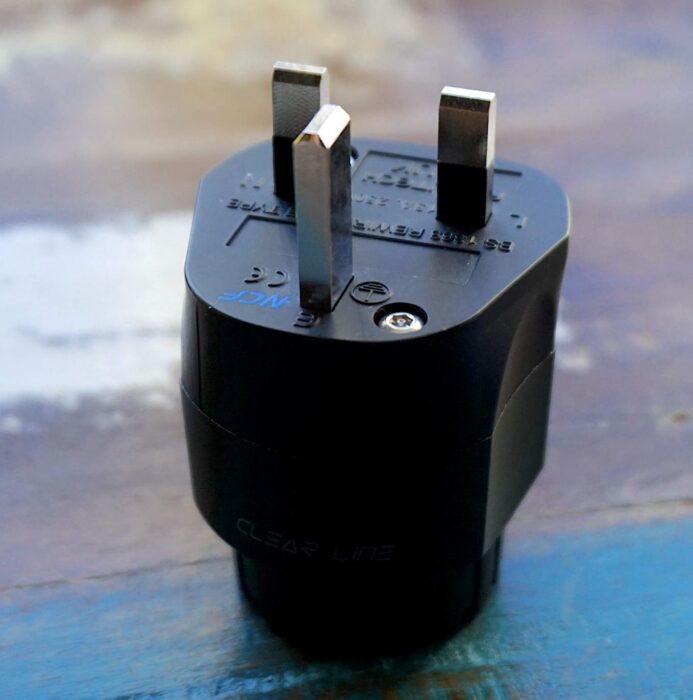
Looking to lower the noise floor across your HiFi system? Japan’s Furutech says you can by using one of its stubby little gizmos
Looking at the NCF Clear Line mains plug (3-pin, UK version), it’s a chubby, meaty looking unit that is small enough (88.4 X 39.5 mm) to sit in a clenched hand, feels solid and not particularly heavy at 69g.
There is a lot going on here. The 4-layer nylon resin chassis is not remarkable to look at although there is more going on under the skin because underneath that outer layer is a layer of carbon fibre, underneath that is more nylon resin and then more carbon fibre under that.

Inside is Furutech’s own NCF technology or Nano Crystal² Formula, basically a combo of ceramic and carbon particles, created to drain noise of various flavours from anything it’s connected to.
Also inside is a pressure-sealed air chamber created for damping purposes. The entire unit has been cryogenically treated (basically shoved into a deep freeze down to seriously nasty low temperatures. Well, -250C at some point which is apparently cold enough to change the internal molecular structure of the material).
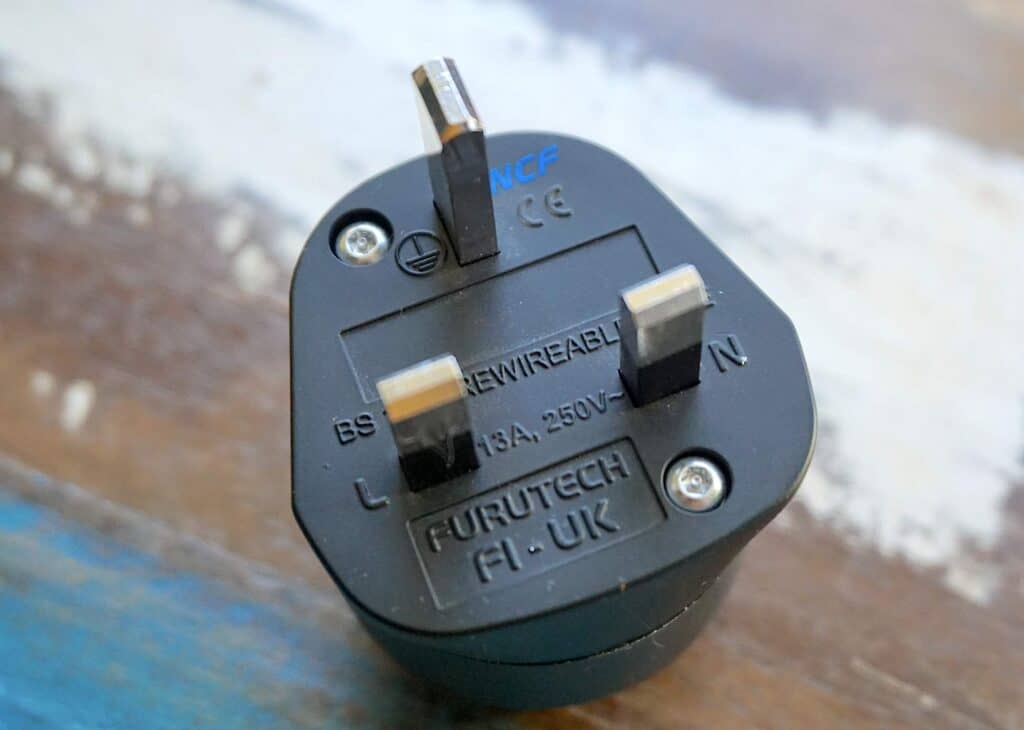
I’ve heard cables, for example, after they have been thus treated and that can help the noise floor. Black Rhodium is one company that’s used this sort of process in the past. It’s not a silver bullet feature in and of itself but it can help if implemented properly.
DEMAG
The unit has also been demagnetised. Again, if done properly, this can help to lower noise a little bit. I do this to my vinyl and CD before play and it does have an effect.
The stubby end cover of the NCL, opposite the wall prongs, that you can see here, is a hybrid structure full of static tech, aimed at rejecting static and suppressing resonance. Basically, it converts vibration into heat which is converted into infrared to be shoved out of the plug itself. It also adds negative ions to remove static.
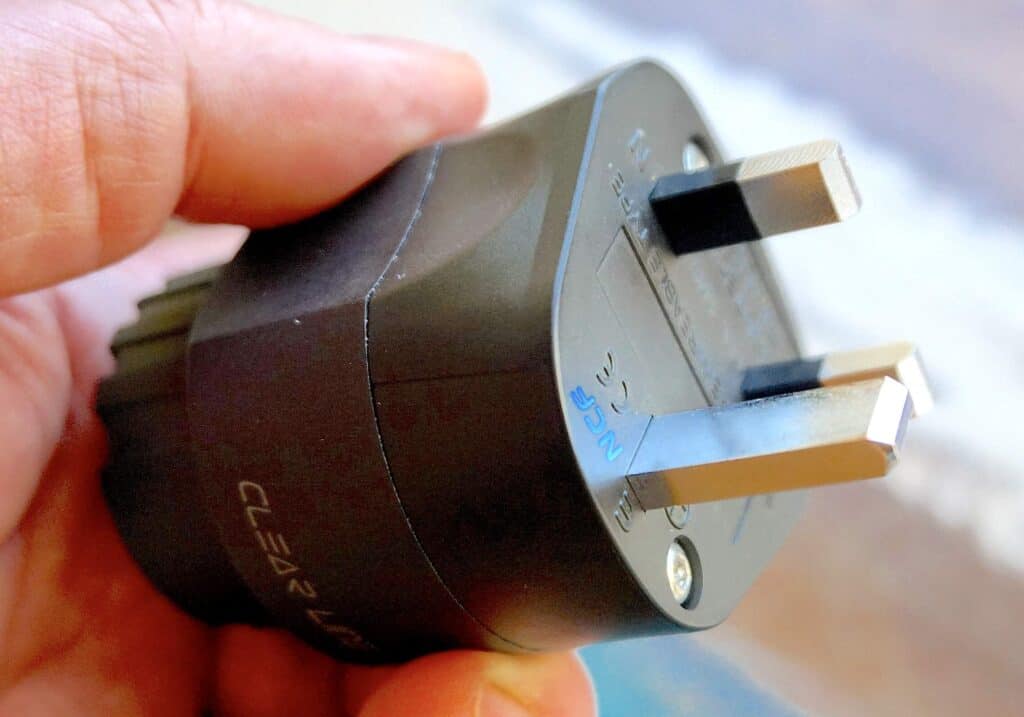
Oh and although I couldn’t find the spec info itself, looking at the prongs? I reckon they’re Rhodium plated. I could be wrong but that how they look to me.
And yes, I know, I know, for some of you, if it doesn’t do anything, if there’s no flashing lights, no power switch and it looks like nothing is moving then…nothing is happening, right? Well, no. When it comes to lowering the noise floor of your HiFi, removing high-frequency noise, vibration, microphony and the like, a passive anti-noise solution is – well, in my experience – a far more effective and efficient solution than an active system that’s full of electrical current. Passive systems, I find at least, do a better job. And I’ve tried most of them.
LIST OF MATERIALS
So look, take a quick look at the list above again. Do you see how many materials are used here? How many processes? I haven’t mentioned them all. NCF is the big headline because it’s Furutech’s own techie baby but there’s a host of techniques and materials and build patterns and so on.
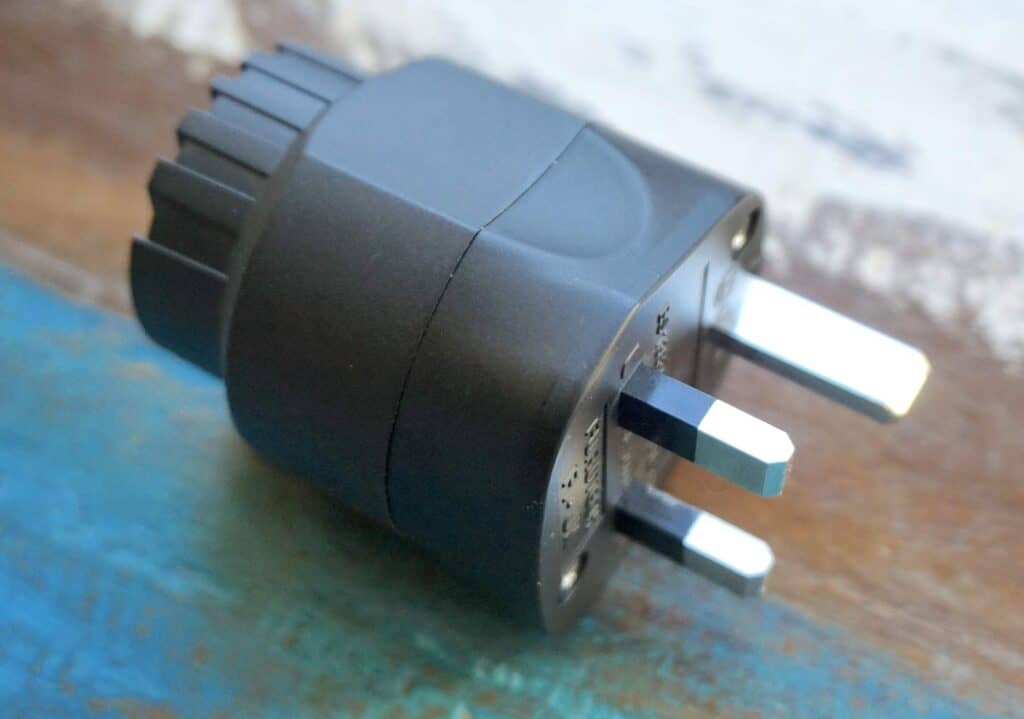
That is what is happening here. My educated guess, is this…
There are multiple processes occurring here, each one demanding the introduction of a particular material or structure or operation (hence, when you add them all up, you get that relatively high price). The result? Multiple small drops in noise with each and every process. Add all of those up and we should hear something interesting. That’s my guess, having worked with some of the included tech on an individual basis.
Let’s see what happens, then.
SOUND QUALITY
Putting the Clear Line Mains Plug into action is simple. You plug it into a spare mains socket on the power block that is also being used by the rest of your HiFi. The idea is that any noise hanging around this area will be beaten to a pulp and removed by the Furutech plug. And there is plenty of noise in this area, which is why I use quality mains cabling and quality power bricks.
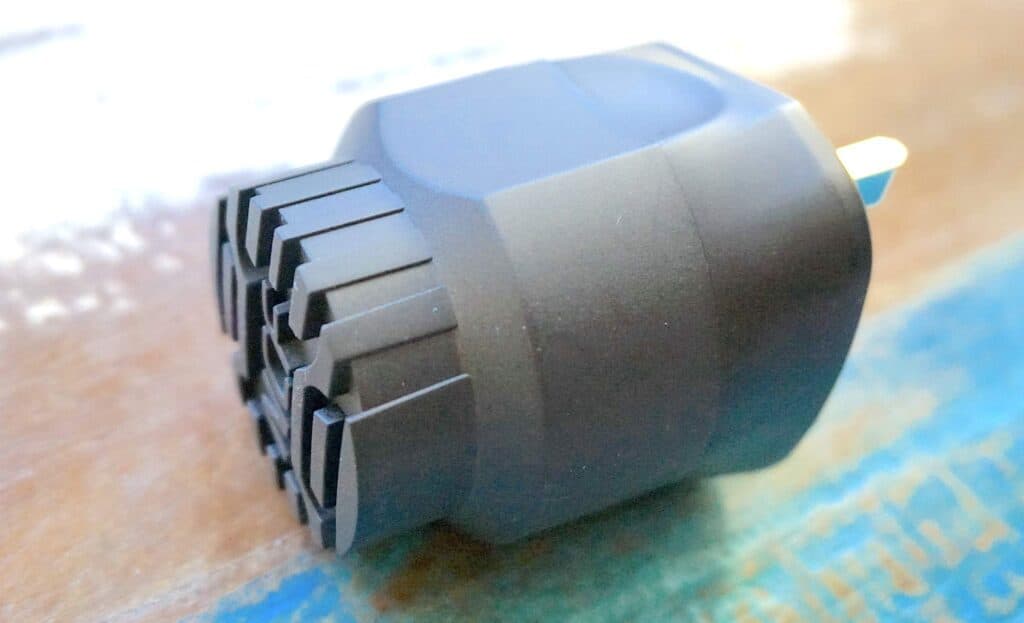
And on that note, to repeat, I am already using high quality blocks and cabling and grounding accessories and shelving and a lot more accessories for a pretty low noise floor already.
This hunk of accessory will thus have to be seriously good to even have an effect on my system, even if I say so myself.
I began with vinyl and the self-titled, late-period, 1968 original pressing on Audio Fidelity from Tony Martin, a crooning jazz singer who had a rather formal, baritone delivery. At least he did on this release. Here, he’s backed by a full orchestra. He was married to Cyd Charisse, incidentally. (Cyd had legs so long she could kick a glass out of your hand while standing in the next room). What? HiFi? Oh, yea.
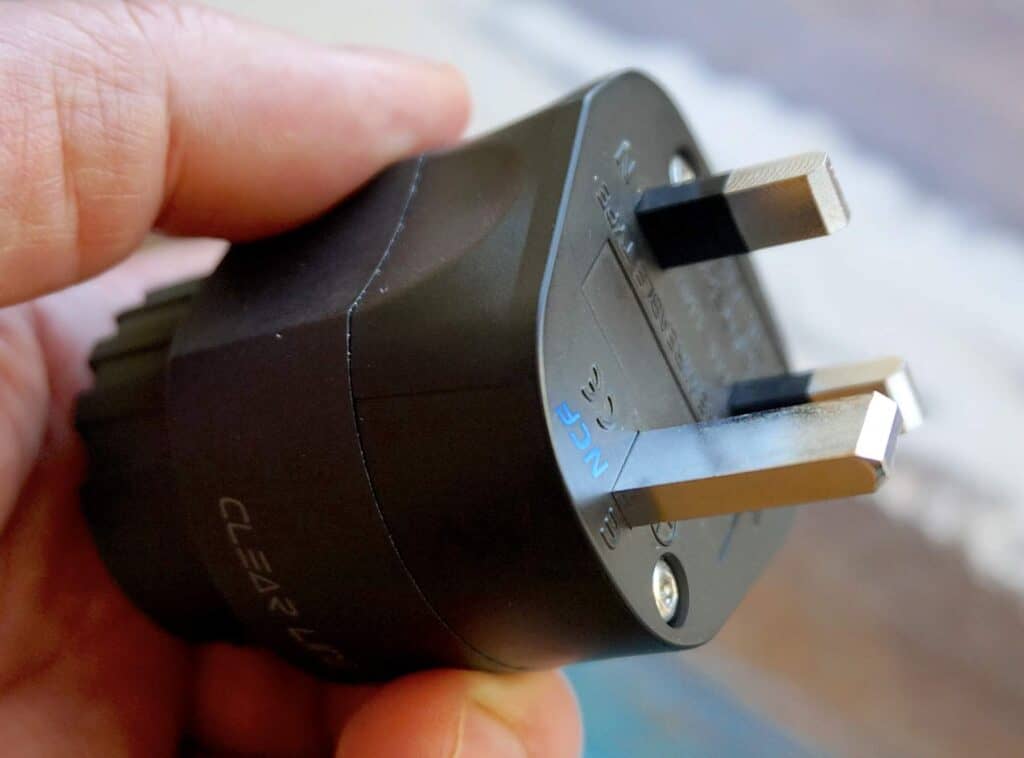
What I did for this test was separate my source components onto one power block and my amplifier and speakers (I used powered electrostatics from Quad) on another and tested a NCF on each to see what happened, if anything.
Playing Our Love Is Here To Stay, on the right channel, there’s a prominent acoustic guitar, percussion and bass. On the left a flute, trombone and a bank of strings with the vocal in the centre of the stereo image.
VINYL ON SOURCE
I plugged the NCF into the source power block first and heard an immediate focusing around the main vocal. The delivery was tighter now, less sprawling around that stereo image, nimble and sprightly too. The other noticeable effect was a much clearer delivery from the acoustic guitar on the right channel. I could hear more from that instrument now as if to had been pushed forward in the mix. That guitar sounded detailed because I could hear more of it, so extra information was reaching my ear now.

Also, on the left channel, that flute was better behaved. The NCF tamed it a little because, earlier, flute crescendos could peak horribly, forcing the ear to wince a little as the flute barked out that high note. That scary effect was vastly reduced now.
VINYL ON POWER
How about the power section via the power block now? Well, that nasty, spiky flute was back now because there was no source control any more but the lower bass was distinctly calm. Bass had a lesser effect on this track because it wasn’t such a factor within the arrangement but the the upright bass was now more precise and focused so the foundation of this track was more secure, you might say.
CD ON POWER
Even so, I wanted to see what bass could really do with the NCL so I turned to CD and Lush’s album, Spooky. I played the track For Love and heard an immediate effect right across the lower frequencies. Bass guitar sounded twangier now, bouncy and resonant. There was more space around the bass regions too while focus and precision had increased. The soundstage across the lower frequencies also sounded larger, broader and sonically impressive. There was an extra power surge in this area.
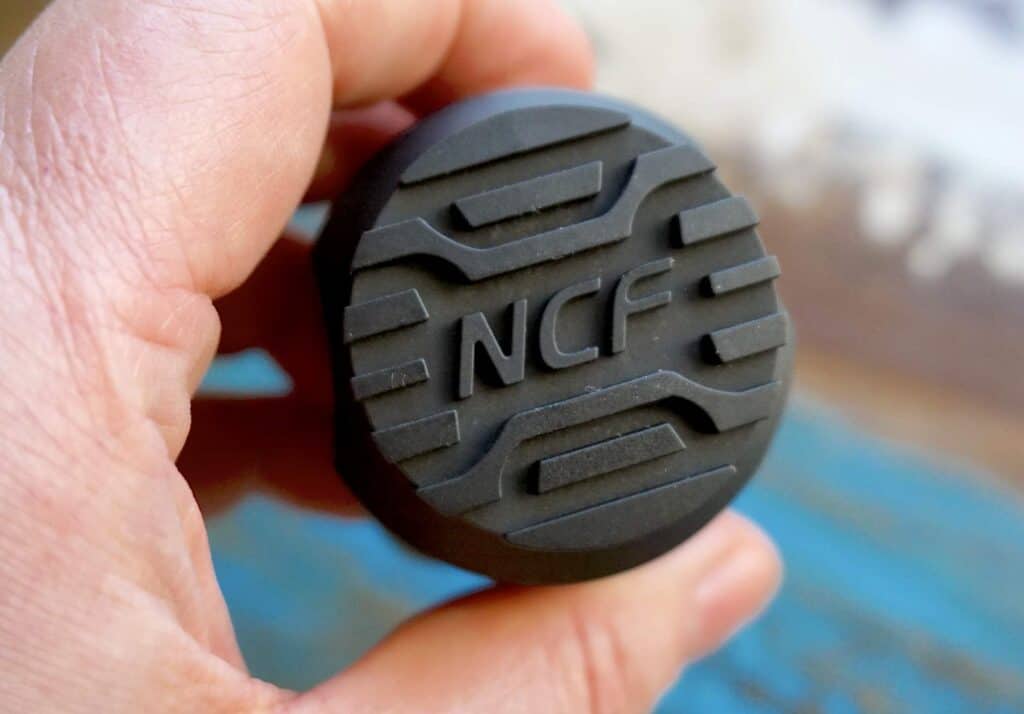
That wasn’t all though, I did hear a reduction in noise across the upper frequencies too via the power block, oddly enough, even across the upper mids and treble.
CD ON SOURCE
So I retained the bass-centric CD music and swopped the NCL to the source block to see if that changed anything. The upper mids and treble retained a lower noise effect but that was smoother across the very top now. The lower regions also retained a certain amount of low noise but the soundstage was restricted. It wasn’t as broad or as powerful now.
The effects from mains block to mains block no doubt were effected by the change from source components to power components but also, I guess, from one mains block design to another. Different design types and different brands will probably be a factor in the final sound improvements or otherwise. So testing on your own set up is critical here.
CONCLUSION
Of course, I could have been there all day, changing and tweaking variables to find the best possible configuration for the NCL. What I did realise at the end of this test was that one NCL wasn’t enough for me. I needed at least two: one for each power block. Now I’m also wondering what four would sound like, two on each block. And then, what about…well, as I say, I could be there all day.
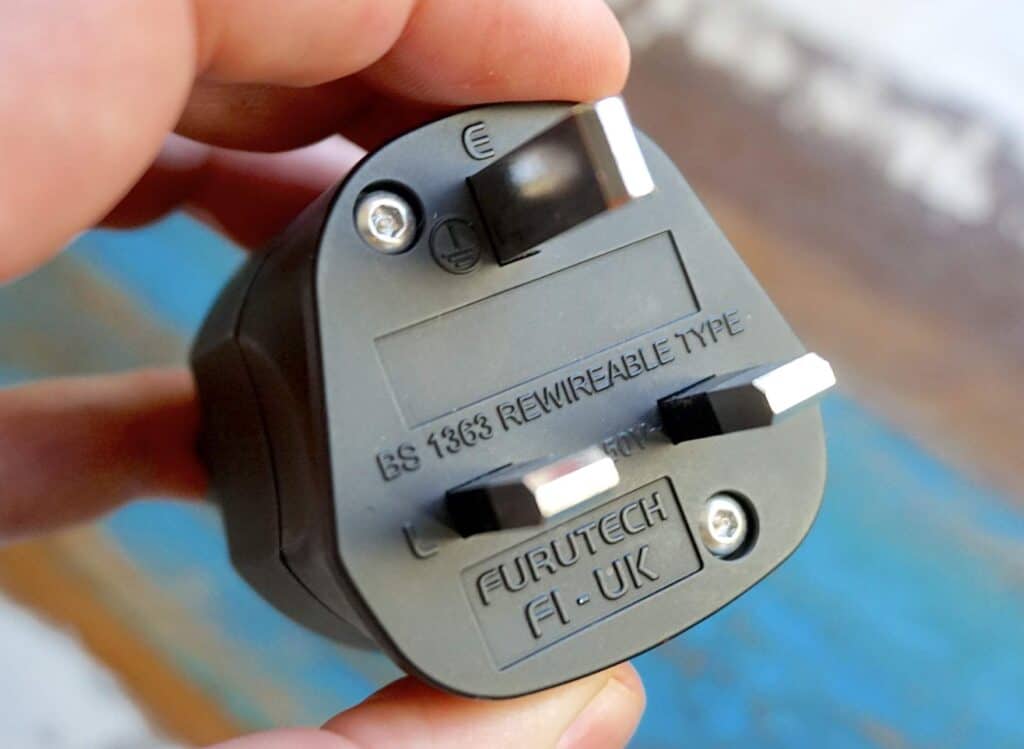
Bottom line is this, the NCL has an effect and also, in turn, is effective. I was very happy with the stubby little guy. With its low-noise treatments, it changes the sound of my HiFi and for the better, I have to say.
What I would recommend is to try and grab one or more from a friendly retailer for a home demo and experiment with your system, your components, your power blocks and see what pattern spread works best for you and your HiFi chain.
Ultimately, the Furutech NCL is worth the effort.
FURUTECH NCF CLEAR LINE UK MAINS CONNECTOR
Price: £290 each
Website: www.soundfowndations.co.uk or www.furutech.com
GOOD: low noise, easy to use, compact, overall sound improvements
BAD: nothing
RATING: 8
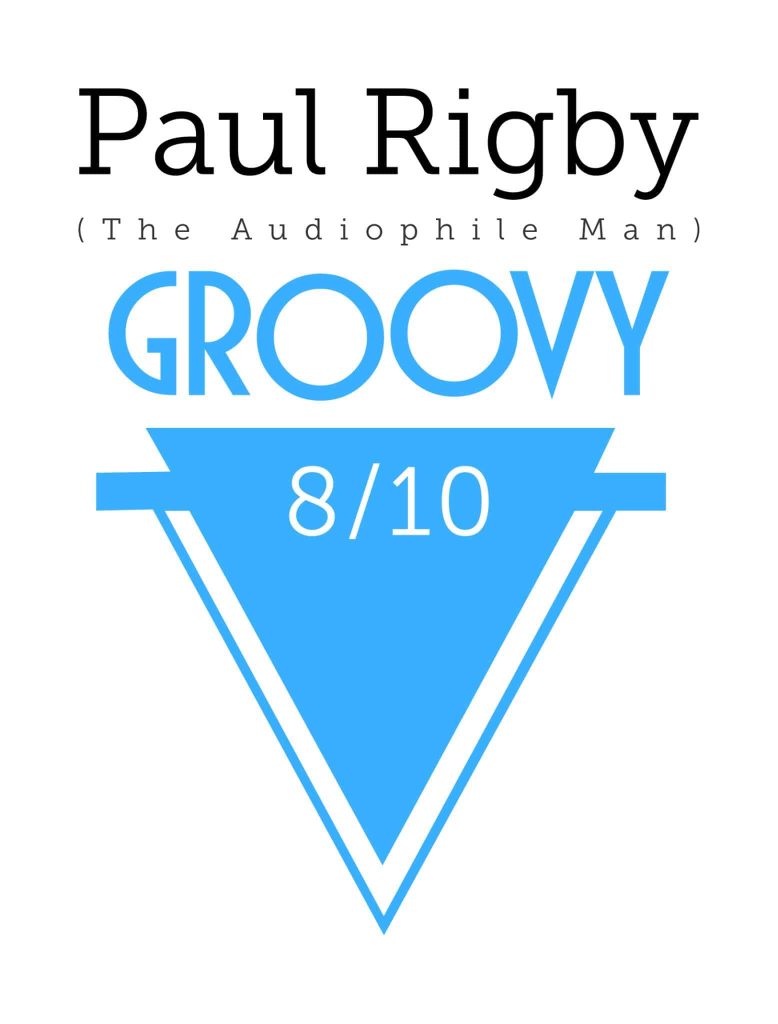
Don’t forget to check out my Patreon Page at www.patreon.com/audiophileman, for exclusive postings and more!]
REFERENCE
Origin Live Sovereign turntable
Origin Live Enterprise 12″ arm
Icon PS3 phono amplifier
Aesthetix Calypso pre-amp
Icon Audio MB845 Mk.II Monoblock Amplifiers
Blue Horizon Professional Rack System
Harmonic Resolution Systems Noise Reduction Components


